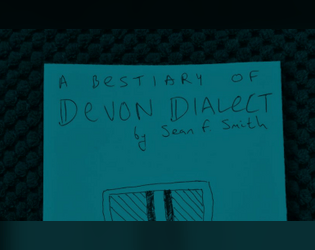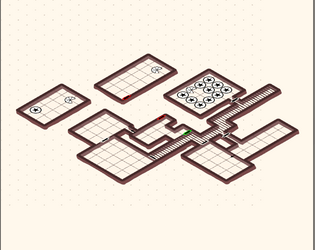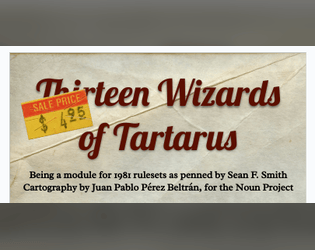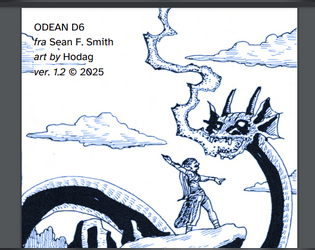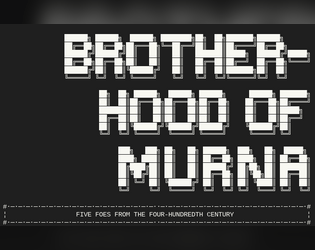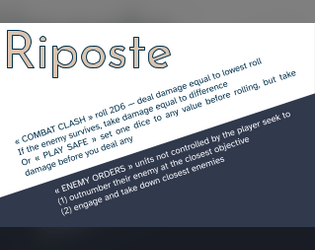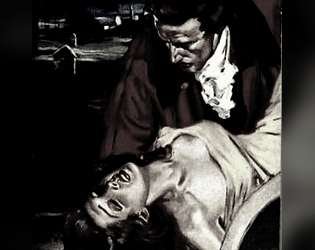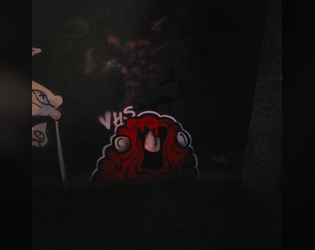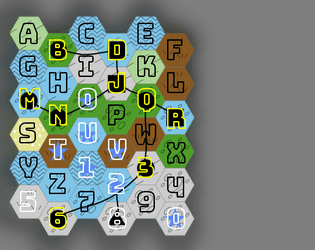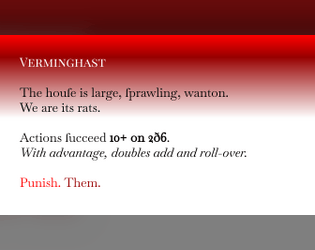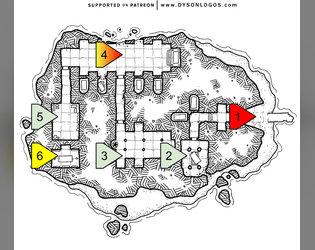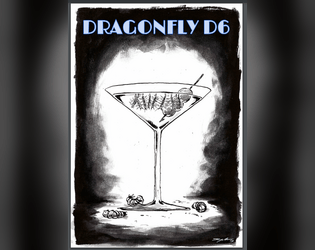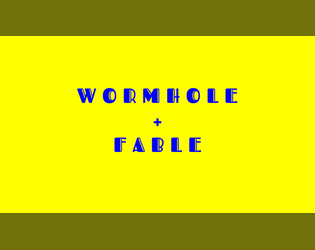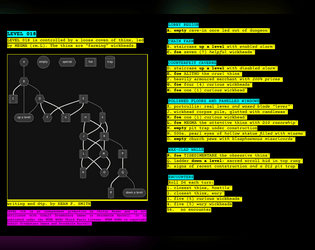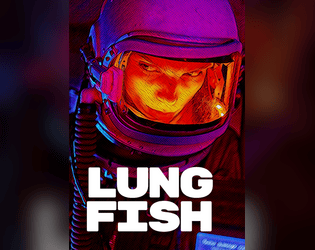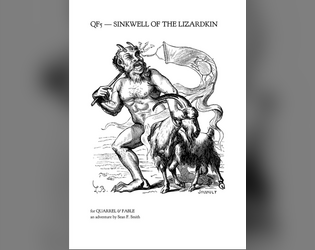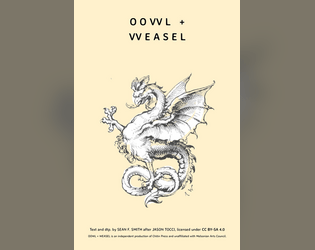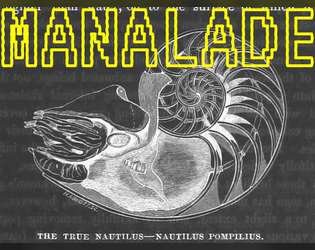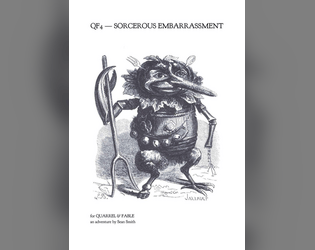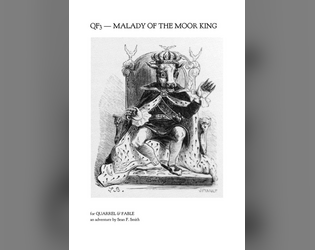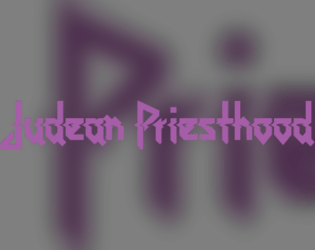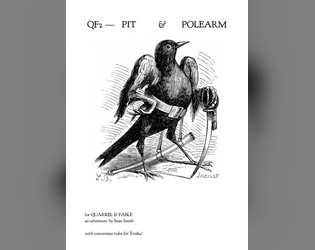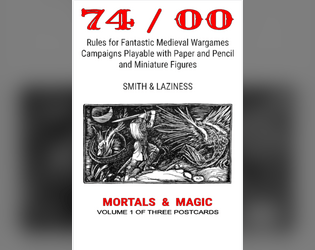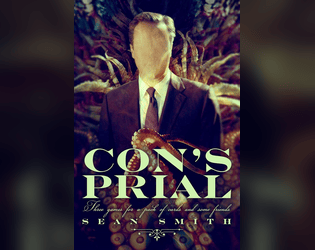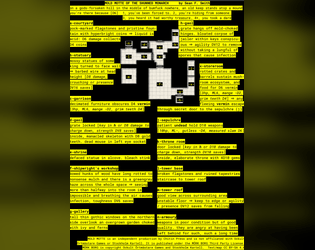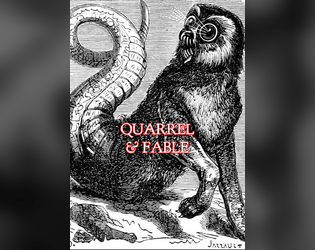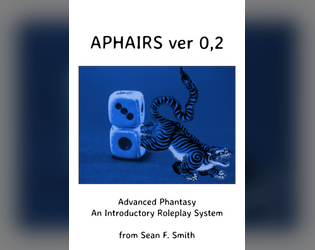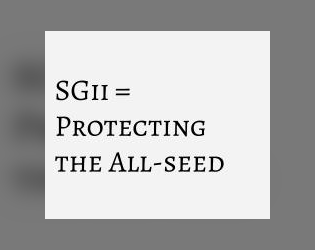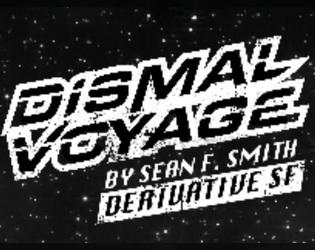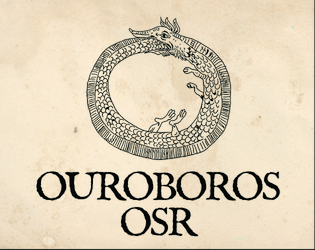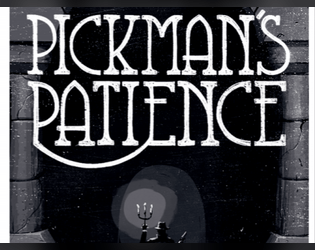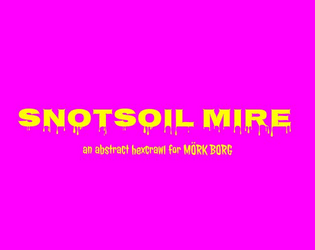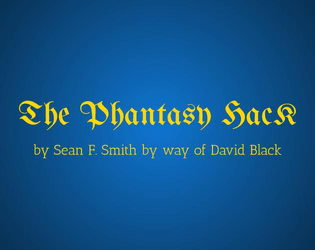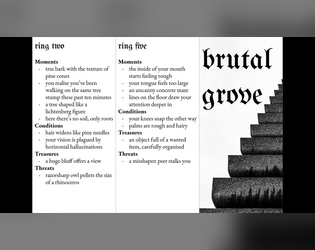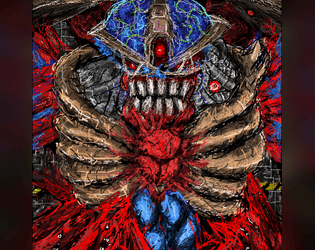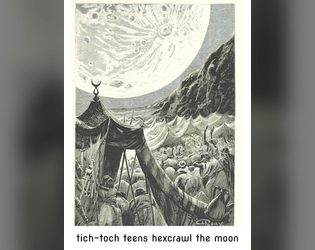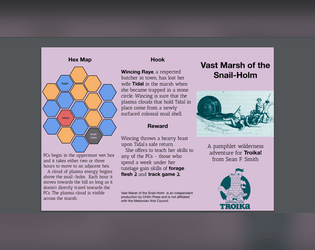Thanks a lot :))
sean f, smith / he, him
Creator of
Recent community posts
So the obvious thing would be injury or exhaustion (I take out the goblins but need to catch my breath) or it could be position (we’ll fight backs to the wall) or equipment attrition (I’m willing for my shield to be ruined in this fight)
But I also have run it zoomed out combats like in T&T where a single roll accounts for the whole of the fight
Yeah!
So if you’re trying to force open a door, you might be willing to pay
-
time, in that you use up torches and risk wandering monsters
-
energy or health, in that it exhausts or hurts you to do so
-
noise, in that people will be made aware
In some situations it could also be players offering use of their resources to overcome challenges, like using up safebreaking equipment
Thanks a bunch!
So in terms of direct use ── it’s meant to not need anything else to hand (except spell lists for casting classes: I tend to use the little booklets from Lost Pages for mine). But in terms of indirect use, it’s purposefully lean because it assumes anyone buying an odnd derivative will have read (and likely played) at least one or two other versions of the same sort of system.
The only other major oversight within the booklet is that there’s no direct stats for monsters, which is somewhat intentional. I run a lot of horror games, and being a Brit I live in the long shadow of Warhammer, so around 80% of my monsters/NPCs are just Other People. Though if people wanted advice on specific monster books to go looking for, I’d recommend
-
Out of the Pit for Advanced Fighting Fantasy et al.
-
Monsters from Luke Gearing


